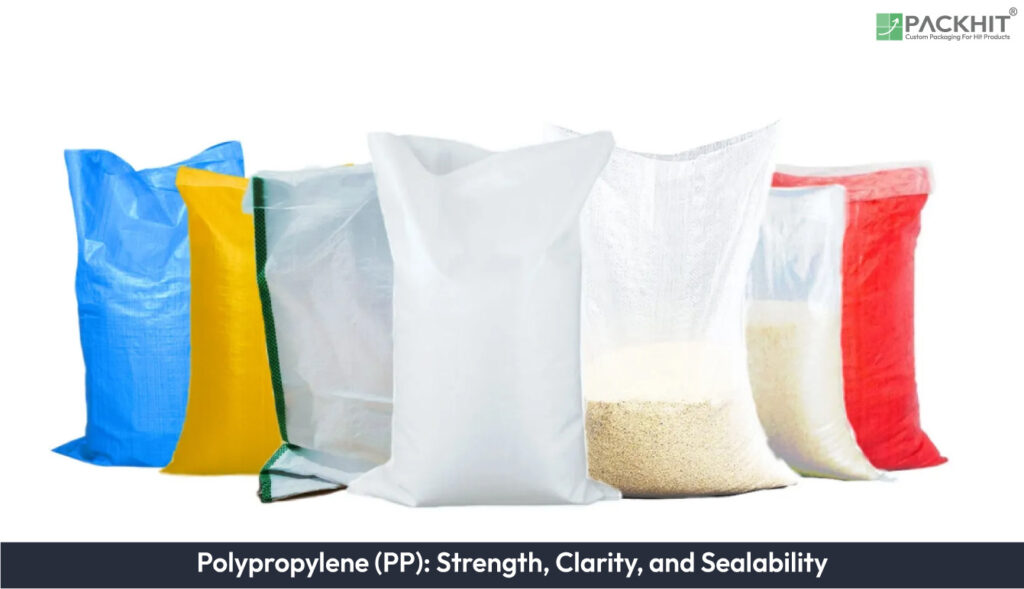Polypropylene (PP) is a thermoplastic polymer widely recognized for its exceptional mechanical strength, optical clarity, and sealability properties, making it a cornerstone material in packaging applications. Its molecular structure, characterized by a high degree of crystallinity, contributes to its tensile strength and resistance to deformation under stress. Additionally, PP exhibits low moisture absorption and chemical inertness, ensuring product integrity in diverse environmental conditions. The material’s ability to form airtight seals, coupled with its transparency, positions it as a preferred choice for manufacturers seeking durable and visually appealing packaging solutions. This article explores the material composition, performance attributes, and practical applications of polypropylene in packaging, with a focus on its relevance to custom paper-based packaging solutions.
- What is Polypropylene?
- How is Polypropylene Structured?
- How Does Polypropylene Achieve Strength?
- What Contributes to Polypropylene’s Optical Clarity?
- How Does Polypropylene Enable Sealability?
- What Are the Key Applications of Polypropylene in Packaging?
- How Does Polypropylene Perform Under Environmental Stress?
- How Does Polypropylene Compare to Other Packaging Materials?
What is Polypropylene?
Polypropylene is a polymer synthesized through the polymerization of propylene monomers, belonging to the polyolefin family. Its chemical structure consists of a repeating chain of carbon and hydrogen atoms, with methyl groups attached to alternating carbon atoms. This arrangement forms the basis of its semi-crystalline nature, which contributes to the material’s rigidity and thermal stability. Polypropylene can be categorized into different grades, such as homopolymer and copolymer, each designed for specific applications based on their unique structural characteristics.
How is Polypropylene Structured?
The semi-crystalline structure of polypropylene results from its isotactic molecular configuration, where methyl groups are uniformly aligned along the polymer chain. This structural arrangement ensures mechanical strength and impact resistance, with the degree of crystallinity typically ranging from 50% to 70%. The higher the crystallinity, the greater the tensile strength and dimensional stability of the material. These properties make polypropylene highly adaptable for packaging applications, particularly where durability and performance under stress are required.
How Does Polypropylene Achieve Strength?
The strength of polypropylene is primarily attributed to its semi-crystalline structure, which provides a balance between rigidity and flexibility. Its tensile strength ranges from 30 to 40 MPa, depending on the grade and processing conditions. The material’s high melting point, approximately 160°C, ensures dimensional stability under thermal stress, making it suitable for applications requiring durability in high-temperature environments. Furthermore, the polymer’s resistance to fatigue and stress cracking enhances its longevity in demanding conditions, such as repeated mechanical loading or exposure to harsh chemicals.
What Contributes to Polypropylene’s Optical Clarity?
Polypropylene’s optical clarity is a result of its low haze and high light transmittance properties. The polymer’s amorphous regions allow light to pass through with minimal scattering, creating a transparent appearance. Clarifying agents, such as sorbitol-based nucleating agents, are often added during processing to further enhance transparency by reducing the size of crystalline domains. This makes polypropylene an ideal material for applications requiring visual inspection or aesthetic appeal, such as food packaging and retail displays.
How Does Polypropylene Enable Sealability?
Sealability in polypropylene is achieved through its ability to form strong, airtight bonds under heat and pressure. The polymer’s low melting point relative to other thermoplastics facilitates efficient heat sealing, while its chemical inertness ensures compatibility with a wide range of adhesives and sealants. Polypropylene’s seal integrity is particularly valuable in applications requiring moisture and oxygen barriers, such as vacuum-sealed food packaging. Additionally, its resistance to punctures and tears further enhances its suitability for protective packaging solutions.
What Are the Key Applications of Polypropylene in Packaging?
Polypropylene is extensively used in packaging due to its versatile properties. In the context of custom paper-based packaging, PP is often employed as a laminate or coating to enhance durability, moisture resistance, and sealability. Common applications include:
- Food Packaging Transparent polypropylene (PP) films are extensively used for wrapping perishable goods. These films ensure product freshness by forming airtight seals that prevent contamination and moisture ingress. Their optical clarity also enhances visual appeal, making them ideal for showcasing food products in retail environments.
- Medical Packaging Sterile polypropylene containers and films are indispensable in the medical field. They provide contamination-free storage for medical supplies, such as syringes, bandages, and surgical instruments. The material’s chemical inertness and moisture resistance ensure the integrity and sterility of medical products during transport and storage.
- Industrial Packaging Polypropylene-coated paper bags are designed to offer superior strength and moisture resistance, making them suitable for packaging bulk materials like fertilizers, cement, and grains. These coatings enhance the durability of paper-based packaging, ensuring that the contents remain intact even in demanding industrial conditions.
- Retail Packaging Clear polypropylene boxes and pouches are widely used in the retail sector for presenting consumer goods. Their transparency highlights product features, while their structural integrity ensures protection against physical damage. These packaging solutions are particularly popular for electronics, cosmetics, and gift items.
How Does Polypropylene Perform Under Environmental Stress?
Polypropylene exhibits excellent resistance to environmental stressors, including UV radiation, moisture, and chemical exposure. Its low water absorption rate (<0.01%) prevents swelling or degradation in humid conditions, while its chemical inertness ensures stability against acids, bases, and solvents. However, prolonged exposure to UV light can lead to polymer degradation, necessitating the use of stabilizers or additives for outdoor applications. The material’s recyclability further enhances its environmental profile, aligning with sustainability goals in packaging design.
How Does Polypropylene Compare to Other Packaging Materials?
Polypropylene offers distinct advantages over other packaging materials, such as polyethylene and polyester, in terms of strength, clarity, and sealability. Compared to polyethylene, PP provides higher tensile strength and thermal stability, making it suitable for demanding applications. While polyester offers superior optical clarity, PP’s lower cost and ease of processing make it a more economical choice for large-scale production. These comparative attributes enable manufacturers to select polypropylene for applications where a balance of performance and cost-efficiency is required.

